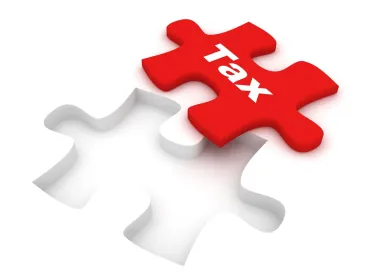The December 2017 tax legislation commonly referred to as the Tax Cuts and Jobs Act (the Act) provides significant tax incentives for taxpayers to invest in certain low-income communities designated as Qualified Opportunity Zones under Code Section 1400Z-1. Proposed regulations published by the U.S. Department of the Treasury in October 2018 provide additional guidance regarding Qualified Opportunity Zone investments (the Proposed Guidance). The following analysis is based on the Act and the Proposed Guidance. While the Proposed Guidance is helpful in figuring out which investments and properties will qualify for the Qualified Opportunity Zone benefits, there are still questions to be addressed and the IRS and Treasury Department are accepting comments to their Proposed Guidance.
There are nearly 8,800 designated Qualified Opportunity Zones. A list of Qualified Opportunity Zones can be found in IRS Notice 2018-48 and a detailed spreadsheet, map, as well as additional resources can be found at here.
What is the Potential Tax Benefit?
The Qualified Opportunity Zone tax incentives come in three forms:
- Deferral of tax on capital gains that are rolled over into Qualified Opportunity Zone Property,
- Potential partial exclusion from taxation of capital gains that are rolled over into Qualified Opportunity Zone Property, and
- Potential exclusion from taxation of all future capital gains relating to the Qualified Opportunity Zone Property investment.
How Do I Qualify for the Deferral and Exclusion Tax Benefits?
First, definitions, definitions, definitions… To qualify for deferral and exclusion tax benefits under Code Section 1400Z-2, a taxpayer has 180 days from the date of the sale or exchange of an investment to an unrelated party to elect to reinvest capital gains from such sale or exchange in a Qualified Opportunity Fund. If the taxpayer uses both rollover funds and other funds to invest in a Qualified Opportunity Fund, then the investment is treated as two separate investments, with only the rollover investment qualifying for the benefits under Code Section 1400Z-2.
A Qualified Opportunity Fund is a domestic corporation, partnership, or limited liability company taxed as a partnership organized for the purpose of investing in Qualified Opportunity Zone Property.
Qualified Opportunity Zone Property includes:
- Qualified Opportunity Zone Stock
- Qualified Opportunity Zone Partnership Interest
- Qualified Opportunity Zone Business Property
Qualified Opportunity Zone Stock means any stock in a domestic corporation if (a) such stock is acquired by the Qualified Opportunity Fund after December 31, 2017, at its original issue from the corporation solely in exchange for cash, (b) as of the time such stock was issued, such corporation was a Qualified Opportunity Zone Business (or, in the case of a new corporation, such corporation was being organized for purposes of being a Qualified Opportunity Zone Business) and (c) during substantially all of the Qualified Opportunity Fund’s holding period for such stock, such corporation qualified as a Qualified Opportunity Zone Business.
Qualified Opportunity Zone Partnership Interest means any capital or profits interest in a domestic partnership (or a limited liability company that is taxed as a partnership) if (a) such interest is acquired by the Qualified Opportunity Fund after December 31, 2017, from the partnership solely in exchange for cash, (b) as of the time such partnership interest was acquired, such partnership was a Qualified Opportunity Zone Business (or, in the case of a new partnership, such partnership was being organized for purposes of being a Qualified Opportunity Zone Business), and (c) during substantially all of the Qualified Opportunity Fund’s holding period for such partnership interest, such partnership qualified as a Qualified Opportunity Zone Business.
Qualified Opportunity Zone Business Property means tangible property used in a trade or business of the Qualified Opportunity Fund if (a) such property was acquired by the Qualified Opportunity Fund by purchase after December 31, 2017, (b) the original use of such property in the Qualified Opportunity Zone commences with the Qualified Opportunity Fund OR the Qualified Opportunity Fund substantially improves the property, and (c) during substantially all of the Qualified Opportunity Fund’s holding period for such property, substantially all of the use of such property was in a Qualified Opportunity Fund.
Qualified Opportunity Zone Business means a trade or business where (a) substantially all of the tangible property owned or leased by the taxpayer is Qualified Opportunity Zone Business Property, (b) at least 50 percent of the total gross income is derived from the active conduct of such business, (c) a substantial portion of the intangible property is used in the active conduct of any such business, (d) less than 5 percent of the average of the aggregate unadjusted bases of the property is attributable to nonqualified financial property, and (e) no portion of the proceeds of such business is to be used to provide any private or commercial golf course, country club, massage parlor, hot tub facility, suntan facility, racetrack or other facility used for gambling, or any store the principal business of which is the sale of alcoholic beverages for consumption off premises.
Key Considerations. While there are many details that must be carefully considered, following are some of the major requirements that investors looking to take advantage of the Qualified Opportunity Zone benefits need to be aware of:
-
Must Invest Through a Qualified Opportunity Fund. Taxpayers cannot invest in Qualified Opportunity Zone Property directly but must invest through a Qualified Opportunity Fund, which is a corporation or partnership that meets (and has always met if not newly formed) the requirements for a Qualified Opportunity Fund.
-
90 Percent Asset Test. A Qualified Opportunity Fund must hold at least 90 percent of its assets in Qualified Opportunity Zone Property. Compliance with the 90 Percent Asset Test is determined by the average of the percentage of the Qualified Opportunity Zone Property held in the Qualified Opportunity Fund as measured on the last day of the first six-month period of the taxable year of the Qualified Opportunity Fund and on the last day of the taxable year of the Qualified Opportunity Fund. (There is a working capital safe harbor for Qualified Opportunity Fund investments in Qualified Opportunity Zone Businesses that acquire, construct, or rehabilitate tangible business property, which allows a broader definition of working capital with respect to property held by the business for a period of up to 31 months.)
-
New Capital Requirement – Original Use or Substantial Improvement. The Qualified Opportunity Fund must invest capital to create a new business located in the Qualified Opportunity Zone or to substantially improve an existing business located in the Qualified Opportunity Zone. Generally, property shall be treated as substantially improved by the Qualified Opportunity Fund only if the Qualified Opportunity Fund expends additional capital to improve the property within a 30-month period at least equal to the cost of the property. Note that taxpayers are not required to include the cost basis attributable to land on which a building sits in determining whether the building has been substantially improved.
-
“Substantially All.” The Proposed Guidance clarifies that if at least 70 percent of the tangible property owned or leased by a trade or business is Qualified Opportunity Zone Business Property, the trade or business is treated as satisfying the “substantially all” requirement in the definition of Qualified Opportunity Zone Business. (Even though the phrase “substantially all” is used in several places in Code Section 1400Z-2, this 70 percent threshold is intended to apply only to the term “substantially all” as it is used in the definition of Qualified Opportunity Zone Business. This is one of the areas where the Treasury Department is seeking additional comments.) Interestingly, the Proposed Guidance recognizes that this 70 percent threshold for a trade or business will give Qualified Opportunity Funds an incentive to invest in a Qualified Opportunity Zone Business rather than owning Qualified Opportunity Zone Business Property directly. For example, a Qualified Opportunity Fund with $100 million in investment funds plans to invest all of its assets in real property. The Qualified Opportunity Fund can either hold the real property directly or invest in a subsidiary entity that holds the real property. If it holds the real property directly, then at least $90 million (90 percent) of the property must be located within a Qualified Opportunity Zone to satisfy the 90 Percent Asset Test for the Qualified Opportunity Fund. If it invests in a subsidiary that holds the real property, then only $70 million (70 percent) of the property must be located within a Qualified Opportunity Zone to satisfy the “substantially all” threshold under the Proposed Guidance. Furthermore, if the Qualified Opportunity Fund only invested $90 million into the subsidiary, which then held 70 percent of its property within a Qualified Opportunity Zone, the investors in the Qualified Opportunity Fund could receive the tax benefits while only risking $63 million (63 percent) of its assets investing in a Qualified Opportunity Zone. Thus, there is a chance that this 70 percent threshold may be increased to the 90 percent threshold once final regulations are issued that replace the Proposed Guidance.
-
“Sin” Businesses Prohibited. The Qualified Opportunity Zone Business cannot be a private or commercial golf course, country club, massage parlor, hot tub facility, suntan facility, liquor store, or racetrack or other facility used for gambling.
-
Beware of Related Party Sales. There are two related party “gotchas” in Code Section 1400Z-2: (1) Capital gain proceeds from a related party sale are not eligible for investment in a Qualified Opportunity Fund; and (2) Property acquired from a related party by a Qualified Opportunity Fund or a Qualified Opportunity Zone Business does not qualify as Qualified Opportunity Zone Business Property. A “related party” is defined by reference to the related party rules of Code Section 267(b) and 707(b), using 20 percent instead of 50 percent. Thus, a taxpayer who sells Qualified Opportunity Zone Business Property to a Qualified Opportunity Fund would be limited to ownership of 20 percent of the Qualified Opportunity Fund.
-
Timing Requirements. The investment in the Qualified Opportunity Fund must generally be made within 180 days from the date of the sale or exchange to defer capital gain. However, the Qualified Opportunity Fund has additional time to invest in Qualified Opportunity Zone Property to qualify as a Qualified Opportunity Fund. (Also, the 180-day period may start after the capital gain transaction if a partner elects to defer its distributive share of partnership gain since the 180-day period is generally deemed to start at the end of the partnership’s taxable year, rather than the transaction date.)
Deferral on Rollover Benefit. Reinvesting the capital gains in a Qualified Opportunity Fund will allow taxpayers to defer recognition of the capital gains until the Deferral Inclusion Date, which is the earlier of the date the Qualified Opportunity Zone Property is disposed of, or December 31, 2026. At that time, the capital gain that was initially deferred (subject to the basis adjustments discussed immediately below) will be recognized and included in the taxpayer’s income. Thus, even if the Qualified Opportunity Zone Property is not sold before December 31, 2026 (and there are no corresponding proceeds to pay the tax liability), the deferred gain is still included in the taxpayer’s income.
Partial Exclusion on Rollover Benefit. The Act allows the taxpayer to partially eliminate some of the deferred gain by increasing the basis of the Qualified Opportunity Fund investment if the taxpayer holds the investment for a sufficient length of time. The taxpayer’s income tax basis in the Opportunity Zone Fund is initially zero. If, on the Deferral Inclusion Date, the taxpayer has held the Opportunity Zone Fund investment for five years, the taxpayer will get a 10 percent step-up in the taxpayer’s income tax basis in the Opportunity Zone Fund investment. If, on the Deferral Inclusion Date, the taxpayer has held the Opportunity Zone Fund investment for seven years, the taxpayer will get an additional 5 percent basis step-up, for a total of a 15 percent step-up in the taxpayer’s income tax basis in the Opportunity Zone Fund investment.
Exclusion on Future Appreciation Benefit. If the taxpayer holds the Qualified Opportunity Fund investment for at least 10 years, then the taxpayer may elect to step-up the income tax basis in the Qualified Opportunity Fund investment to fair market value on the date that the investment is ultimately sold or exchanged and not pay any income tax on the gains that result after the Deferral Inclusion Date.
Examples
Example One – Short Term Investment Acquired Before December 31, 2021
- On July 1, 2019, Taxpayer sells stock for $30 million.
- Taxpayer’s income tax basis is $20 million.
- The resulting capital gain is $10 million.
- Taxpayer invests the entire $10 million capital gain (and only that gain) into a Qualified Opportunity Fund within 180 days from July 1, 2019.
- On November 1, 2021, Taxpayer sells his or her Qualified Opportunity Fund investment, which has a fair market value of $40 million.
- Taxpayer’s income tax basis is not stepped up because the investment was held for less than five years.
- Taxpayer recognizes $10 million in deferred capital gain plus $30 million in additional capital gain.
- The entire $40 million in capital gain is reported on Taxpayer’s 2021 income tax return filed in 2022.
Example Two – Long Term Investment Acquired Before December 31, 2021
- On July 1, 2019, Taxpayer sells stock for $30 million.
- Taxpayer’s income tax basis is $20 million.
- The resulting capital gain is $10 million.
- Taxpayer invests the entire $10 million capital gain (and only that gain) into a Qualified Opportunity Fund within 180 days from July 1, 2019.
- On December 31, 2026, Taxpayer still owns the Qualified Opportunity Fund investment, which has a fair market value of $40 million.
- Taxpayer’s income tax basis is stepped-up 15 percent (of the initial $10 million deferred investment) from $0 to $1.5 million, and Taxpayer recognizes $8.5 million in capital gain, which is reported on the Taxpayer’s 2026 income tax return filed in 2027. Taxpayer’s income tax basis in the Qualified Opportunity Fund investment is $10 million.
- If Taxpayer sells the Qualified Opportunity Fund investment on February 1, 2028, for $45 million, then Taxpayer recognizes $35 million in capital gain, which is reported on his or her 2028 income tax return filed in 2029.
- If Taxpayer sells the Qualified Opportunity Fund investment on November 1, 2030, for $45 million, then Taxpayer can elect to step up the basis in the investment to $45 million and not recognize ANY of the $35 million in capital gain.
Example Three – Investment Acquired after December 31, 2021
- On July 1, 2023, Taxpayer sells stock for $30 million.
- Taxpayer’s income tax basis is $20 million.
- The resulting capital gain is $10 million.
- Taxpayer invests the entire $10 million capital gain (and only that gain) into a Qualified Opportunity Fund within 180 days from July 1, 2023.
- On December 31, 2026, Taxpayer still owns the Qualified Opportunity Fund investment, which has a fair market value of $40 million.
- Even though Taxpayer still owns the Qualified Opportunity Fund investment as of the Deferral Inclusion Date, Taxpayer’s income tax basis is not stepped up because the investment was held for less than five years and Taxpayer recognizes $10 million in capital gain, which is reported on the Taxpayer’s 2026 income tax return filed in 2027. Taxpayer’s income tax basis in the Qualified Opportunity Fund investment is $10 million.
- If Taxpayer sells the Qualified Opportunity Fund investment on February 1, 2028, for $45 million, then Taxpayer recognizes $35 million in capital gain, which is reported on the Taxpayer’s 2028 income tax return filed in 2029.
- If Taxpayer sells the Qualified Opportunity Fund investment on November 1, 2034, for $45 million, then Taxpayer can elect to step up the basis in the investment to $45 million and not recognize ANY of the $35 million in capital gain.





 />i
/>i
